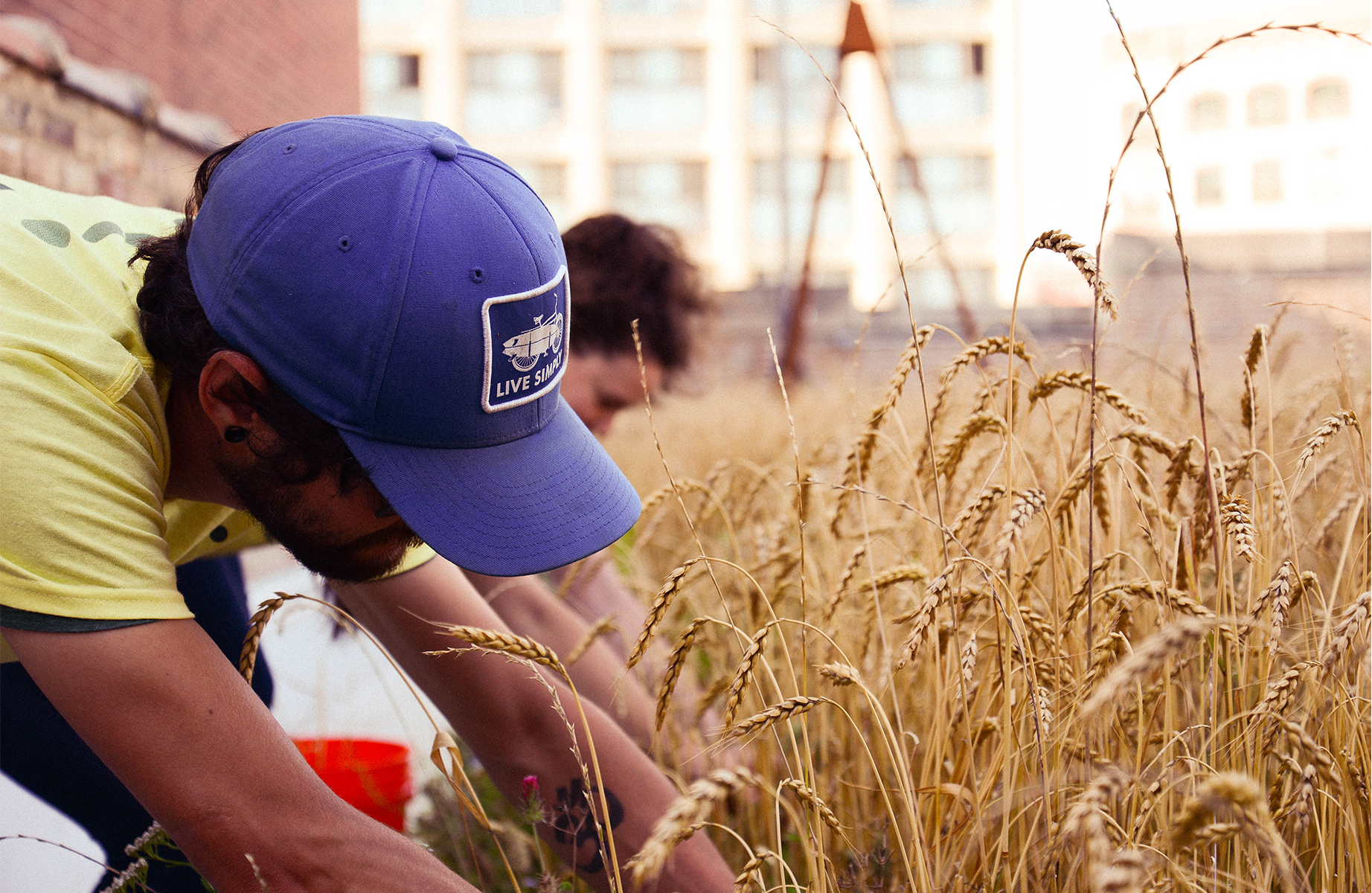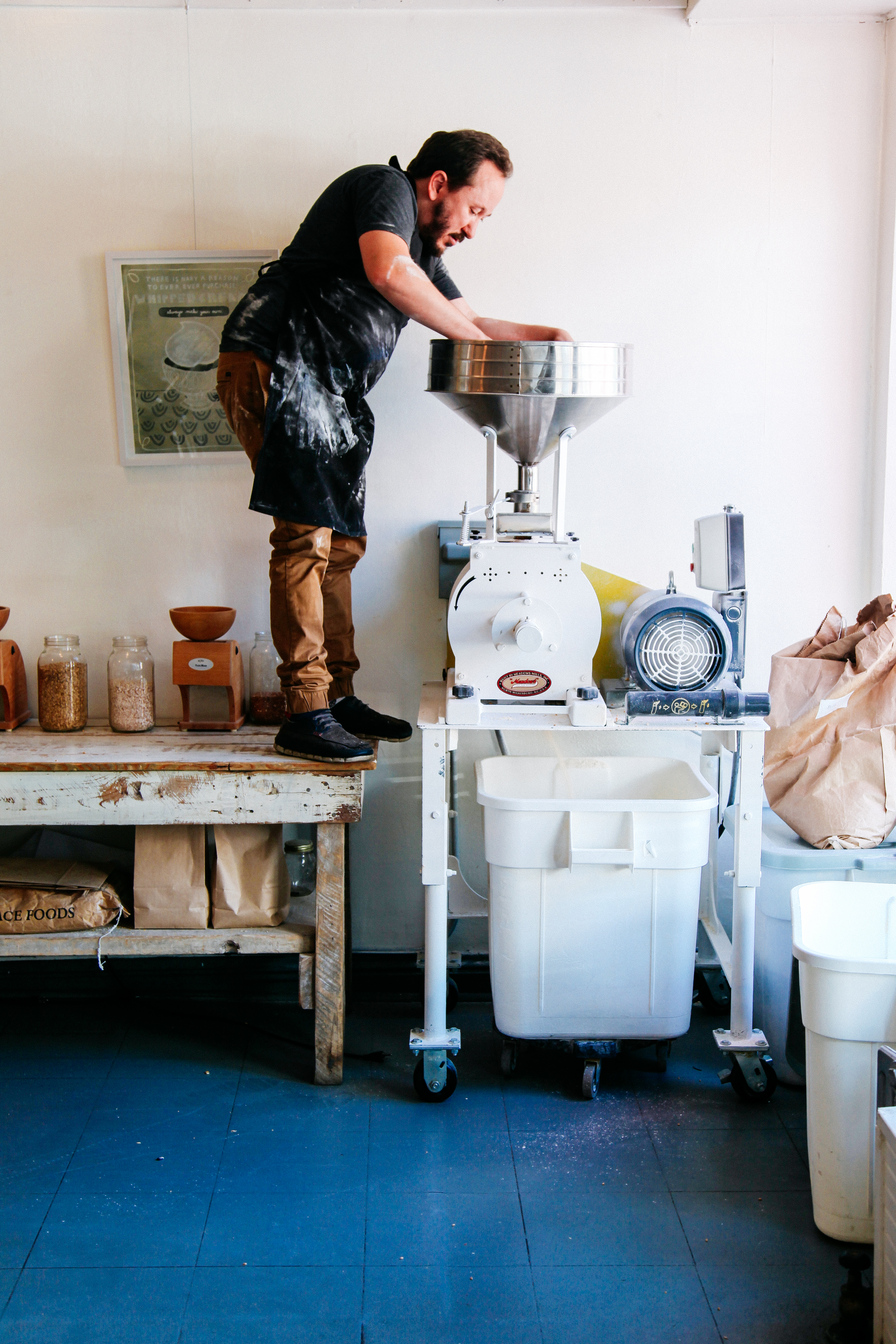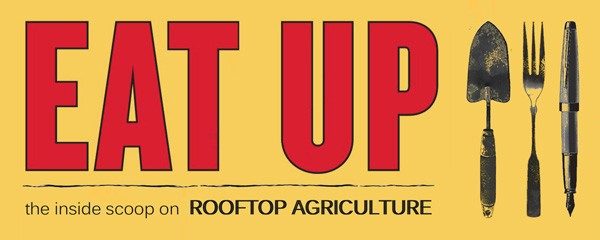amber waves of grain

Rooftop wheat field in Chicago || photo by Chris Murphy, Omni Ecosystems
In Chicago, green roof designer and Omni Ecosystems CEO, Molly Meyer, selected an unlikely plant species for atop Studio Gang’s office: hardy winter wheat. A wildflower meadow mix was originally slated for the 5,000-square-foot roof, but the project’s late-season seeding prompted the Indiana-native to add the quickly-establishing, edible species to increase the roof’s winter cover. Incidentally, the wheat grew so prolifically that Omni Ecosystem’s partner company, The Roof Crop, harvested the grain with the help of students from After School Matters. The 2016 harvest yielded 60 pounds of high-quality pastry flour, which was baked into chocolate chip cookies (yum!) by local bakery/cafe Baker Miller.
The project recently won a 2018 Honor Award from IL-ASLA in Landscape Architectural Research, which puts this rooftop wheat prairie back in the spotlight. I wanted to learn about the potential for skyline grain fields throughout the Midwest, so I asked Molly:

Harvesting the wheat with scissors || photo by Hannah Hoggatt Photography
[LM] When specifying hardy winter wheat for the Studio Gang roof as a winter cover crop, did you ever think a harvestable crop would result?
[MM] …To our knowledge, no one had attempted a green roof grain harvest, and in general, cereal crops are not included in urban agriculture operations and discourse. It was a fascinating opportunity. We worked with The Roof Crop to determine the logistics of collecting, processing and baking the grain into an edible product. We had conducted a toxicology test to confirm that the grain could be consumed; the tests were clear, and the grain yielded a high-quality pastry flour. We certainly did not predict that when we seeded the roof!
[LM] Have additional wheat crops been seeded and/or harvested since the first harvest, in 2016?
[MM] On Studio Gang’s roof, the design goal from the beginning had always been for the roof to support native plants in an ultra-lightweight system. The wheat field was a delightful phase during the ecological establishment and evolution of the rooftop’s ecosystem. Today the Studio Gang Architects roof supports native plants as originally intended. After a brief interlude as a wheat field producing cookies for humans, this rooftop wildflower meadow is still producing food- food for pollinators!

Baker Miller processing the wheat harvest || photo by Hannah Hoggatt Photography
[LM] Have you planted wheat on any other rooftops?
[MM] We still use winter wheat as a cover crop for many of our green roofs. None have matched Studio Gang in terms of grain production, but that is intentional. Studio Gang’s rooftop proved that wheat thrives in our system, and knowing that, we would seed a harvestable amount only if that is a specific goal for the project. Not everyone wants a wheat field; though, a couple breweries have gotten excited about the idea now that they know it is possible!
[LM] Is rooftop wheat production feasible at a commercial scale, say, 1-acre?
[MM] That’s a really exciting question. It is possible, but it’s also uncharted territory. An Omni Green Roof could certainly support a 1-acre wheat field, but new tools would make a larger harvest commercially viable. From cutting to threshing and winnowing to milling: wheat can be a labor-intensive crop to harvest and process. On Studio Gang, we hand harvested with scissors- less efficient than it could have been if we were not also trying to protect the establishing meadow in the understory. A few hours into the harvest, we joked about inventing a rooftop combine. It is funny to imagine, but in seriousness, it is the kind of innovation needed to scale rooftop wheat production.
[LM] Do you think this innovative approach to green roof plant selection could influence future rooftop farms in the Grain Belt and beyond?
[MM] There is a incredible interest in using wheat on other projects and more broadly in innovating on other projects like we did at Studio Gang. The wheat project was exciting because it challenges conceptions about urban agriculture. It was a great learning moment for Omni, The Roof Crop and for our industry. We showed that rooftop grain production is possible, and the positive response that followed our harvest and use of the crop captured imaginations and inspired more ideas. We are excited about what’s to come!
 EAT UP
EAT UP